Macedonian Food Dishes: Basic Overview
Common Ingredients
Common Cooking Methods
Courses
Meals
Key Taste
Eating Etiquette
Meal Presentation
Culinary Festivals
Influence and Fusion
Popular Types of Macedonian Dishes
-
Condiments and Sauces
In Macedonian cuisine, ajvar, a roasted red pepper and eggplant relish, is famous.
These flavorful condiments are made from locally grown vegetables and are often prepared at home during the harvest season, preserving the bounty for the winter months.
They are best to eat with meats, bread, and cheeses.
-
Casseroles and Bakes
Casseroles and bakes are important dishes in family dining in the country.
Tavče gravče, a traditional bean casserole baked in a clay pot, is a national dish here.
These are typically oven-baked meals.
-
Bread and Doughs
Bread and dough-based foods in North Macedonia are diverse, from simple village bread to complex filo pastry pie.
Many of them are ideal snacks or breakfast items.
-
Desserts
Desserts in Macedonian cuisine are influenced by Byzantine, Ottoman, and Mediterranean culinary practices.
These sweets often contain fruits, nuts, honey, dairy products, and phyllo pastry.
Certain sweets become staples at specific times of the year, particularly during religious festivals like Easter and Christmas.
Macedonian dishes are the various specialties prepared in North Macedonia, a country in the Balkans and Southeastern Europe. The nation was formerly known as Macedonia, and locals continue to refer to their culinary traditions as Macedonian food.
Dishes in North Macedonian are significantly shaped by Ottoman cuisine, which includes many modern-day tasty Turkish specialties, and Balkan cuisine. The cooking traditions of the Mediterranean region are also a significant factor.
Vegetables, legumes, meat, and dairy products are staple ingredients in local cuisine, which employs simple and healthy cooking methods.
The first section of this guide deals with the common traits, global popularity, and healthy aspects of traditional Macedonian food.
Next, I will provide you with information on the 25 most popular dishes in North Macedonia, general features of local cuisine, and the best beverages to pair with Macedonian food.
25 Mouth-watering Macedonian Dishes
You’re about to discover the 25 most renowned dishes North Macedonia has to offer. My advanced filters, like alphabetical sorting, main ingredients, taste, cooking methods, dish types, courses, and global popularity, will help you explore this content more easily.
To improve your reading experience, use additional filters based on specific culinary styles and dish label, including traditional, national delights, and street food options.
Tavče Gravče
- National
- Traditional
Tavče gravče is a Macedonian bean dish prepared by simmering white beans in water over low heat for several hours, then seasoning the beans and baking them until tender.
Tavče gravče literally means “beans on a tava,” with tava being an earthenware pot introduced to North Macedonia by Ottoman cuisine. Locals always cook and serve this baked bean dish in this traditional vessel.
While classic tavče gravče is a vegetarian dish, some North Macedonians add meat or bacon to the dish. It is a custom to serve the bean dish for Friday lunch.
Ajvar
- Traditional
Ajvar is a flavorful paste and condiment popular in North Macedonia and many Balkan countries. It consists of eggplants and red bell peppers that are minced and baked or roasted; alternative vegetables, such as tomatoes, are used in other versions.
People usually combine ajvar with bread, white cheese, and many other types of food. Its distinctly smoky, sweet, and spicy flavor and smooth, creamy texture can make a wide variety of dishes taste better.
While ajvar takes a long time to prepare, it is readily available in stores and supermarkets throughout North Macedonia.
After the pepper harvest, between late summer and early autumn, many Macedonian families gather to prepare homemade ajvar. That’s why locals sometimes refer to this period as the ajvar season.
The name ajvar originated from a Turkish word for “caviar.” Apparently, the spread started as a substitute for the expensive delicacy.
Burek
- Street Food
- Traditional
Burek, or börek, is a popular type of savory pie or pastry in North Macedonia. Hailing from Ottoman cuisine, it consists of thin layers of dough known as filo (or phyllo), which are filled with various ingredients, such as minced meat, cheese, or spinach.
Macedonians prepare burek by layering the dough and filling, then rolling or stacking it into a spiral or a pie before baking, creating a delicious pie with a crispy exterior and rich, flavorful filling.
Yogurt is the traditional Macedonian accompaniment to burek for a hearty snack or a quick meal.
Baklava
- Traditional
Baklava is a Macedonian filo pastry dessert that originated in the kitchens of the Ottoman Empire. Like burek, it is immensely popular in many countries in the Balkans, the Middle East, and the Mediterranean.
Baklava consists of alternating layers of filo dough and a mixture of chopped and sweetened nuts, such as walnuts. People improve its flavor by soaking baklava in aromatic syrup of honey and rosewater after baking it.
Renowned for its flaky texture and rich, sweet taste, baklava is typically prepared for many special occasions and holidays in North Macedonia.
Kebapi
- Street Food
- Traditional
Kebapi is the Macedonian version of ćevapi, a grilled meat dish found all over the Balkans. Its main ingredients are ground beef or mutton or a blend of both, onions, garlic, and spices like black pepper and paprika.
The preparation of kebapi involves forming the meat into finger-shaped pieces and grilling them on all sides. While kebapi is much smaller than normal sausages, one bite will reveal that it is much, much tastier.
The combo of Kebapi, flatbread, and local cream is a common sight at Macedonian restaurants and celebrations. The grilled meat dish is also an essential component of many Macedonian summer barbecues and picnics.
Musaka
- Traditional
Musaka is the Macedonian term for moussaka, a renowned baked dish in Balkan and Middle Eastern cuisines. It was invented by an influential Greek cook in the 1920s and quickly became famous in many countries.
Musaka is a blend of ground meat and sliced vegetables (such as eggplants or potatoes), which are arranged in alternating layers, topped with a creamy béchamel sauce, and baked. The rich and savory flavors of musaka make it a beloved comfort food for family dinners.
Sarma
- Traditional
Sarma, literally “wrapped,” is a common baked and stuffed dish in North Macedonian cuisine. It originated in Ottoman cuisine and has widespread popularity in many regions.
Sarma refers to a dish of grape, cabbage, or chard leaves rolled around a filling of rice, minced meat, and various herbs and spices. People in Macedonia usually cook sarma in large pots and serve it with a side of yogurt or sour cream.
Sarma is a well-liked dish during the winter months and special occasions like Christmas, Easter, and Ramadan. This stuffed vegetable dish showcases the fusion of exotic Eastern dishes into the Southeastern European country’s cuisine.
Shopska Salad
- Traditional
Shopska salad is a well-known Macedonian salad made from diced tomatoes, cucumbers, onions, and bell peppers. It is seasoned, dressed with sunflower oil, and generously topped with sirene cheese (a white, brined cheese similar to feta).
Though an appetizer, Shopska salad is so rich and refreshing that it can keep you full for a whole day. North Macedonia enjoys an abundance of vegetables in the summertime, which explains its people’s affinity with the salad.
Shopska salad was created in the 20th century and is a staple salad in many Southeastern European countries, especially Bulgaria.
Palačinke
- Street Food
- Traditional
Palačinke, also known as palatschinken, is a common type of crepe served as a snack or dessert in North Macedonia. It can be served on its own or rolled around a variety of sweet fillings, such as jam, chocolate, fruits, or cheese.
People prepare palačinke from basic baking ingredients, including flour, eggs, milk, and sugar. If you plan to eat it as a side dish, exclude the sweet stuff.
Tarator
- Traditional
Tarator is a famous soup or sauce in North Macedonia and many other Balkan countries. It is a particularly sought-after appetizer or light dish in summer.
Locals cook a pot of creamy tarator with yogurt, cucumber, walnuts, vinegar, olive oil (optional), and spices. However, there is a simpler variety that uses vinegar and water in place of yogurt.
Sometimes, people even water down tarator to such a point that it becomes a beverage. Interestingly, Middle Eastern cuisine also has a sauce called tarator, which has sesame paste and lemon juice as the core ingredients.
Sutlijaš
- Traditional
Sutlijaš is a widely enjoyed Macedonian rice pudding of Ottoman origin. Sutlijaš stems from a similar Turkish pudding called sutlaç, which translates to “milky food.”
Sutlijaš is made from a thickened mixture of milk, rice, and cinnamon sticks. The last ingredient is a local adaptation because classic sutlaç derives its fragrance from rosewater, which isn’t easy to find in the Balkans.
This Macedonian rice pudding is a versatile dessert that can be served hot or cold.
Pindjur
- Traditional
Pindjur is a Macedonian summer spread made from various kinds of roasted vegetables. Common choices include tomatoes, red peppers, chili peppers, and eggplants.
The making of pindjur starts with roasting or grilling vegetables for hours. The next step is to cook them with olive oil and salt into a vividly bright orange paste with a rich, smoky flavor.
Pindjur is a perfect accompaniment to go with cheese, bread, grilled meat, or vegetables to create a great Macedonian breakfast dish or summer meal.
Malidzano
- Traditional
Malidzano is a traditional Macedonian spread made primarily from eggplants and bell peppers, with extra ingredients like feta cheese, olive oil, and garlic. Its name was derived from the Italian word “melanzane” for eggplant.
Prepared in the same way as pindjur, malidzano boasts a creamy texture and a savory, tangy taste that goes well with bread and various side dishes. This relish has a either red or green hue, depending on the color of the peppers.
Turshija
- Traditional
Turshija, also known as torshi, refers to pickled vegetables in Macedonian cuisine. There is a long list of candidates for turshija, such as carrots, eggplants, peppers, and cabbage.
To make turshija, the vegetables are kept in a glass and drenched in a mixture of herbs, salt, and vinegar for some time. Locals often serve pickled vegetables with sarma, salads, bacon, and other rich foods.
Traditionally, turshija is a popular condiment or side dish during the winter months when fresh vegetables are less available.
Pastrmalija
- Street Food
- Traditional
Pastrmalija, informally known as pastrmajlija, is a savory Macedonian pie whose name means “salted lamb.” This bread pie is a popular comfort food choice in the cold months.
Inspired by Turkish pastries, pastrmajlija consists of a thick, boat-shaped dough base topped with slices of cured lamb or pork. In some regions, people substitute lamb for pork fat, ham, or chicken.
Often dubbed the “Macedonian pizza,” pastrmalija is an excellent specialty often paired with pickled vegetables, especially pickled peppers. In Štip, the largest city in the eastern part of North Macedonia, locals host an annual Pastrmajlija festival in autumn.
Polneti Piperki
- Traditional
Polneti piperki is a popular stuffed pepper dish in North Macedonia. It features red or green bell peppers filled with a mix of minced meat, rice, herbs, and spices, which are then baked or simmered in a tomato-based sauce.
Macedonians usually serve polneti piperki as a hot entree with bread, cooked potatoes, or salads. The blend of the bell peppers’ sweetness and the savory filling is just mind-blowing.
Selsko Meso
- Traditional
Selsko Meso is a hearty Macedonian stew made with pork or beef, mushrooms, onions, carrots, and red wine or beer (optional). It is a rich and robust comfort food often enjoyed during colder months.
Selsko meso means “village meat” in Macedonian, referring to the rustic root of the dish. In the past, people cooked the stew in an earthenware pot with anything they could get their hands on.
Although selsko meso takes a long time to prepare, it is available on the menu of many restaurants in North Macedonia.
Turlitava
- Traditional
Turlitava is a traditional Macedonian baked dish made with various ingredients, such as beef or pork chops, tomatoes, eggplants, bell peppers, etc. Its name means “mixed in a tava,” aptly describing the preparation process.
Locals make turlitava by sautéing the ingredients together before baking and serving them on a tava. This baked dish is a colorful and nutritious combination of the best foods in North Macedonia.
Kifli
- Street Food
- Traditional
Kifli is a renowned crescent-shaped bread roll in Macedonian cuisine. It originated in Austro-Hungarian cuisine and can be found in many parts of Europe.
Macedonians prepare this type of bread roll from yeast dough, fill it with feta cheese, and sprinkle it with sesame seeds. Good kifli should be fluffy, flaky, and buttery.
Kifli may not have cheese when served as a side dish, while some recipes incorporate sweet jams or chocolate to turn the bread roll into a snack, dessert, or breakfast dish.
Kifli apparently started as an offering to the goddess of the moon, hence the crescent shape. Many people even think that it is the inspiration for the much-hyped croissant.
Maznik
- Traditional
Maznik is a celebrated spiral-shaped pastry dessert in Macedonian cuisine. It consists of rolled paper-thin dough layers that are filled with spinach, ground meat, cheese, or even no filling.
The preparation of maznik revolves around stretching the dough to paper-thin levels before rolling it with the filling, resulting in a crispy texture on the outside and a soft, flavorful inside.
Properly done maznik has an attractive appearance, a pleasantly flaky texture, and an unbearably toothsome taste, making it a highlight of special occasions and family gatherings.
Vanilici
- Traditional
Vanilici, also known as gurabii, is a milky-white, moon-shaped cookie widely enjoyed in North Macedonia and many Balkan countries. It consists of flour, vanilla sugar, yogurt, and chopped walnuts, among many others.
Literally “mini vanilla cookie,” vanilici hold a special place in Macedonian festive traditions, particularly during Christmas and Easter. A popular way of relishing these fragrant cookies is to serve them with fruit jam in between like a sandwich and dust them with powdered sugar.
Mekici
- Street Food
- Traditional
Mekici is a well-known Macedonian fried dough treat that hails from Bulgaria. It is made from a simple dough of flour, water, yeast, and salt.
With a crispy exterior and airy interior, mekici is a beloved treat to serve with cheese, yogurt, sour cream, or jam for breakfast or snack times.
It is a lovely Macedonian custom that a grandmother welcomes her newborn grandchild by frying some mekici for the baby. Though homemade mekici is mainly bought from bakeries or restaurants these days, the message of love and care for the little ones still remains.
Kozinjak
- Traditional
Kozinjak, also known as milibrod, is a festive braided bread that is most commonly associated with Easter and Christmas in Macedonia. It is made by mixing the yeast-leavened dough with lemon zest, rum-soaked dried fruits, poppy seeds, and fruit jam.
Typical kozinjak also includes a coating of powdered sugar, sesame seeds, and raisins or nuts. These extra ingredients nicely complement the sweet flavor and fluffy, soft texture of this festive bread.
Zelnik
- Street Food
- Traditional
Zelnik is a Macedonian filo pastry filled with brined cabbage (or spinach), cheese, minced meat, and rice. Its name was derived from the Bulgarian word for “cabbage.”
Golden and swirl-shaped Zelnik paired with yogurt or sour cream is popular at many parties and celebrations. This filo pastry is also a common street food item in North Macedonia.
Bakrdan
- Traditional
Bakrdan is the Macedonian take on kačamak, an Ottoman corn porridge with many variations across the Balkans and Western Asia. Its original name came from a Turkish word that means “escapade”, possibly referring to its original function as a poor man’s food in winter.
People make kačamak by mashing boiled cornmeal with milk, cheese, or potatoes. There is nothing sophisticated about it, yet bakrdan is a nice, hearty comfort food with meat, bacon, or sour cream.
You now have a solid understanding of the best dishes in North Macedonia. Next, let’s look at the common traits of this country’s cuisine.
What Are the General Features of Macedonian Cuisine?
To comprehend the big picture of Macedonian cuisine, you should delve into the three following aspects of local dishes.
Since North Macedonia was a territory of the Ottoman Empire for more than five centuries, Ottoman cuisine has a significant impact on local cuisine.
The cooking traditions of neighboring Balkan countries are also a major factor in shaping Macedonian dishes. Interestingly, Macedonian also has a Mediterranean character due to culinary exchange with countries in this region.
The relatively warm climate of North Macedonia provides excellent conditions for growing a variety of vegetables, herbs, and fruits. This abundance of fresh produce makes local cuisine rich in vegetable-based dishes.
Eastern Orthodox Christianity is the predominant religion in North Macedonia, while a significant portion of the population also practices Islam. As a result, both Christian and Islamic customs and holidays significantly influence and diversify the country’s cuisine.
Serving food with the proper beverages is an important part of North Macedonia; continue reading for the easiest food and drink pairing recommendations.
What Beverages to Pair With Macedonian Dishes?
People in North Macedonia usually enjoy the four beverages below with local fare; let’s check out the best way you can experience them.
Rakija
As a strong fruit brandy popular throughout the Balkans, rakija pairs well with hearty, savory dishes, such as tavče gravče, polneti piperki, and selsko meso.
Boza
Boza is a fermented beverage with a slightly sweet and tangy taste, so it is often consumed with pastries or light snacks, including mekici, kifli, and maznik.
Wine
There are many types of wine in North Macedonia, ranging from red to white wines. These vintages can accompany a variety of dishes, such as musaka, sarma, and baklava.
Coffee
Macedonians often enjoy strong and black coffee with sweet pastries, notably vanilici, baklava, and kozinjak.
What do you think about the Macedonian specialties that I recommend? Let me know your opinion in the comment section; I’m all ears! Share this list of Macedonian dishes with your friends, and check out other helpful guides on cuisines around the world!


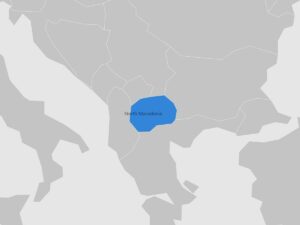

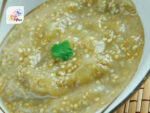

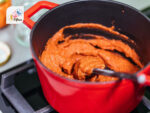
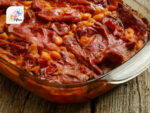

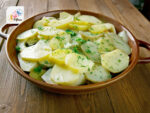
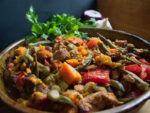
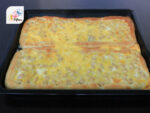

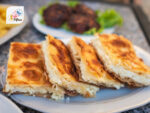
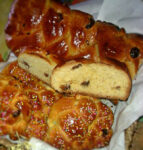
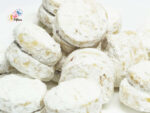
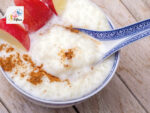
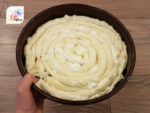

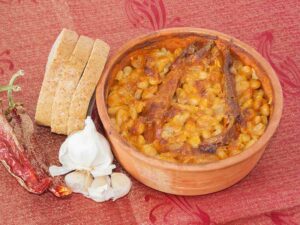
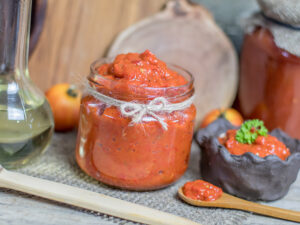
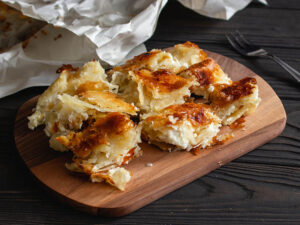
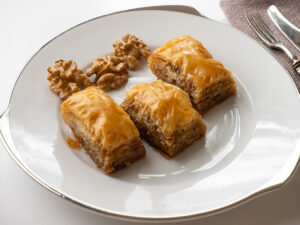
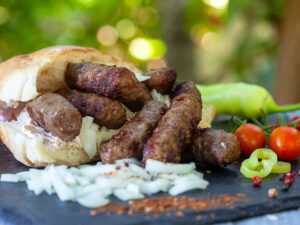
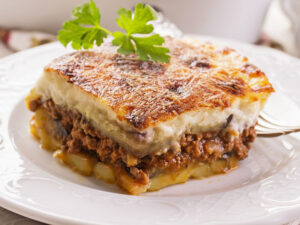
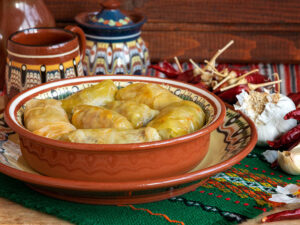
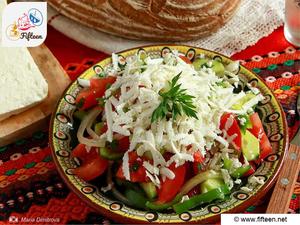
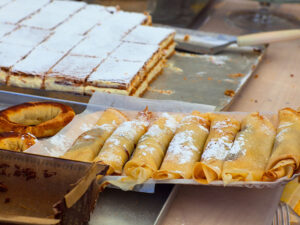
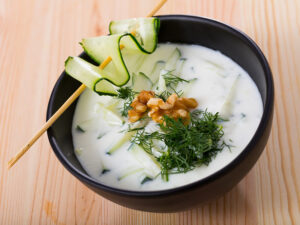
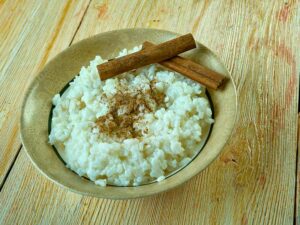
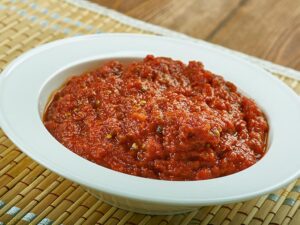
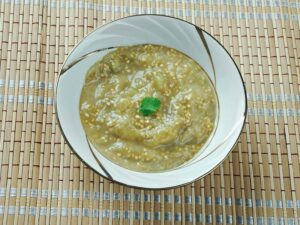
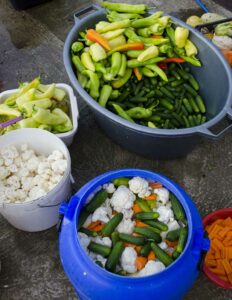

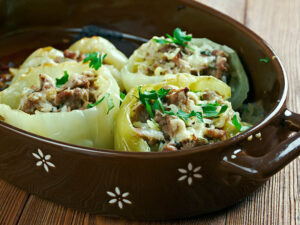
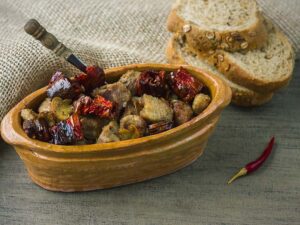
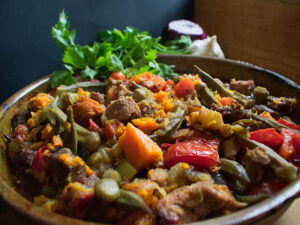

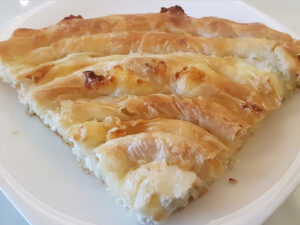

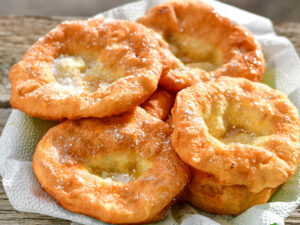
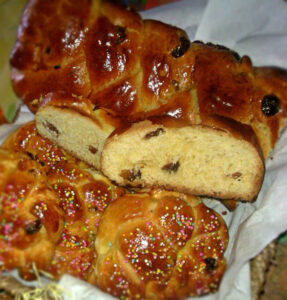
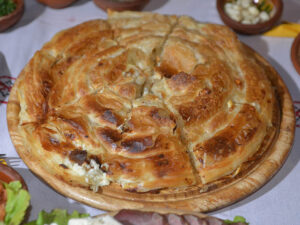
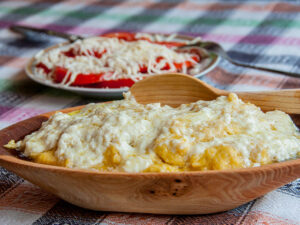
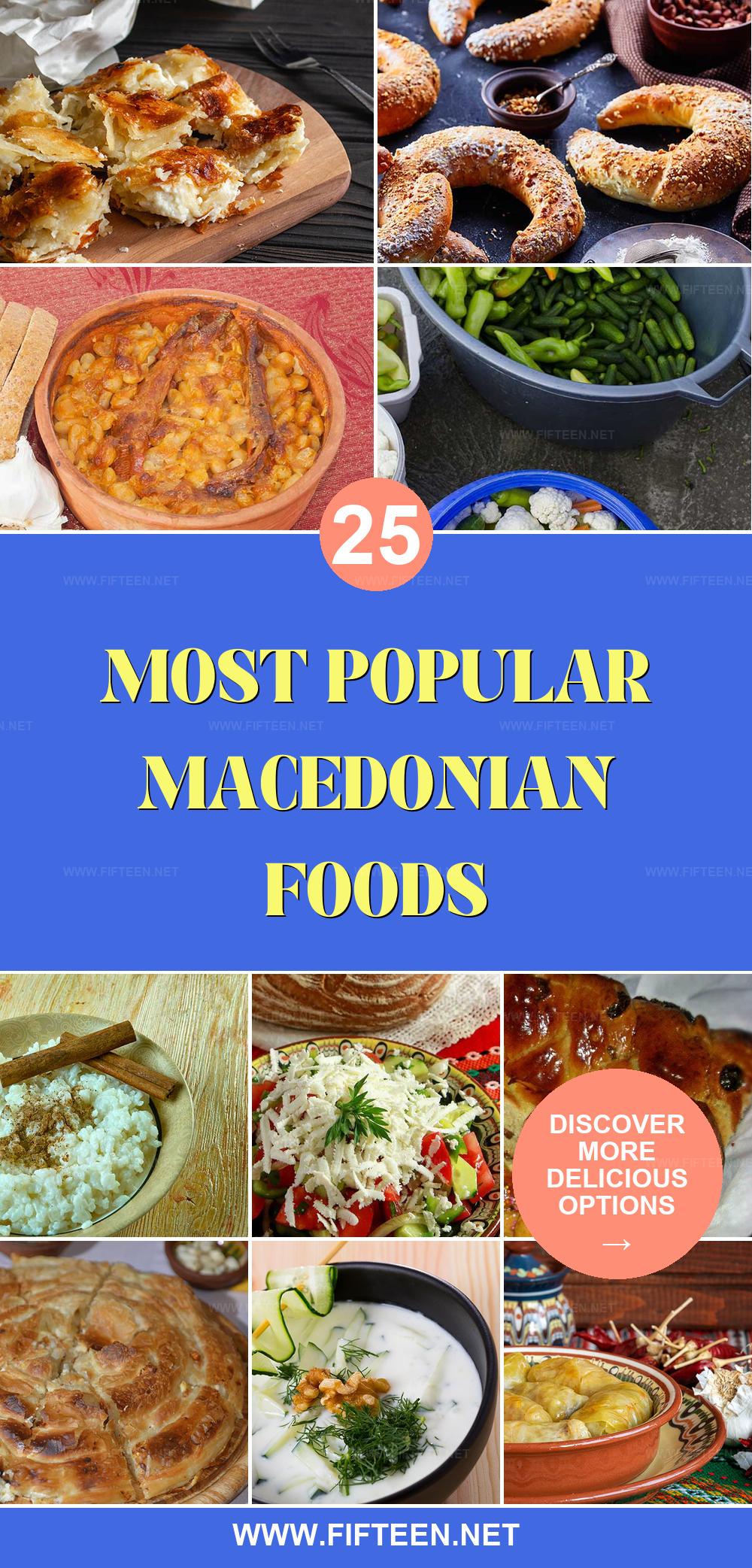
Jamie Scott
Editor in Chief, Senior Content Writer
Expertise
Home Cooking, Meal Planning, Recipe Development, Baking and Pastry, Food Editor, Cooking-video Maker, Western Food Evaluation Expert
Education
Le Cordon Bleu College of Culinary Arts
Local Community College, New York, NY
Jamie Scott is a skilled culinary expert and content creator specializing in Western cuisine. With over 15 years in the culinary field and formal training from Le Cordon Bleu, Paris, Jamie deeply understands how to blend nutrition with delicious flavors. His passion for cooking matches his commitment to making healthy eating accessible and enjoyable.
On Fifteen.net, Jamie brings a fresh perspective to classic dishes and beverages, offering readers insightful recipes, cooking tips, and a fresh view on meal planning that emphasizes taste, health, and simplicity.